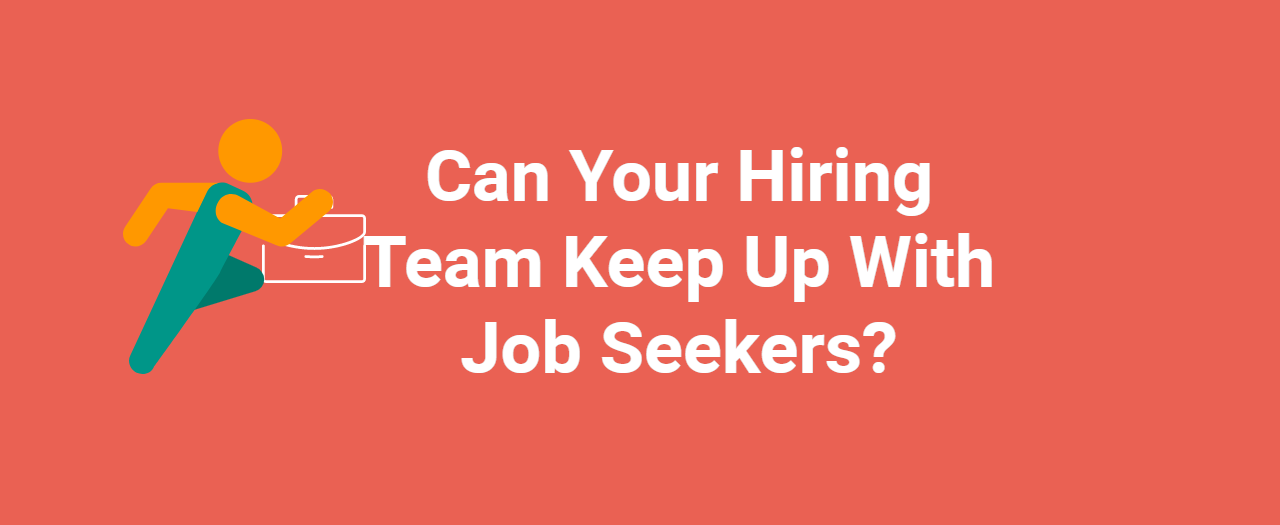Over the last decade, your hiring team has faced many challenges with the changing recruiting landscape. From evolving technology to job hopping tendencies and even talent shortages, there’s no doubt your hiring team warriors have been put to the test.
 Over the last 20 years, Stephanie McDonald, CEO of Talent Consultant and job search coach at Hire Performance, has watched the recruiting field evolve firsthand. Above all, she has experienced job seekers changing expectations and demands over the course of two economic slumps, Y2K madness, and even millennial fever.
Over the last 20 years, Stephanie McDonald, CEO of Talent Consultant and job search coach at Hire Performance, has watched the recruiting field evolve firsthand. Above all, she has experienced job seekers changing expectations and demands over the course of two economic slumps, Y2K madness, and even millennial fever.
“Back when I started recruiting in the dark ages, paper resumes and faxes were the standard way of expressing interest, and job ads were all in print,” McDonald says. “Now job seekers want a short and easy application process, they want answers quickly, and frequent updates.”
However, according to McDonald, this isn’t the only major change in job seekers’ expectations. They’re also expecting employers to understand their value proposition and be able to articulate it well.
“Finally,” she says, “they want transparency in the hiring process with no surprises or poor candidate experiences. If they have a poor experience, companies can end up with negative reviews on sites like Glassdoor.com.”
With so many expectations and demands, your hiring team has their work cut out for them. Here’s how you can help them keep up with job seekers’ changing expectations:
1. Hire for talent, not skills.
 Recruiters and employers alike are looking to hire qualified, highly skilled employees. However, Vinayak Ranade, CEO at Drafted and former director of engineering and technical recruiting at KAYAK, has seen the talent world — especially in tech — be flipped on its head.
Recruiters and employers alike are looking to hire qualified, highly skilled employees. However, Vinayak Ranade, CEO at Drafted and former director of engineering and technical recruiting at KAYAK, has seen the talent world — especially in tech — be flipped on its head.
“When Steve Jobs announced the Apple AppStore, the tech talent landscape changed forever,” Ranade explained. “Everyone wanted to have an app on the iOS Appstore, but no one knew how to build apps. The kind of demand/supply mismatch this caused was unprecedented.”
Ranade explained this forced every company, including KAYAK to focus on hiring talent over skills.
“It became clear that the skills gap was only going to grow wider, which meant that you had to hire learners and then give them tools to learn. It was the death of skill-based hiring,” he said.
Even though the “death of skill-based hiring” occurred years ago, many recruiters continue focusing on skills and years of experience. Create a new list of expectations for each position so your hiring team has a guide. In order of importance, explain what talents, experiences, and skills are most important for each position.
2. Create a marketing plan.
When thinking about marketing plans, most of us think of client acquisition. But today’s job seekers feel more empowered than ever, which means they want to be marketed to — just like your clients.
“Having a marketing plan to attract talent is more important than ever, and those companies not thinking about marketing to candidates are losing the war for talent,” McDonald explained. “Things like videos of current employees who do the job they’re applying for, shadowing a current employee during their interview day, and making sure each team member is adding value versus asking the same questions as other interviewers,” she continued.
Everything McDonald explains has one major theme: give job seekers an experience. Today’s marketing is all about giving each target audience a personalized, unique experience, and that’s exactly what job seekers are expecting.
Encourage your hiring team to create a marketing plan based on unique experiences. Offering job seekers one-on-one time with current employees shows your team is willing to ensure they’re a good fit.
3. Make a list of referrals.
Yes, that’s right. It isn’t just job seekers’ jobs to get referrals and references together anymore. Recruiters need to put in more work than ever to convince candidates that they’re the right choice.
Ranade put it best when he said, “Top talent no longer has to go and search for jobs — the jobs have to search for them.”

“Just like employers like referrals when hiring, job seekers like employee referrals when you reach out to them,” he continued. “Instead of sending cold emails, the best way to get a job seeker’s attention is to find someone in the company network who can do the outreach on your behalf, and then make the introduction.”
Ranade believes every employer is already equipped with a huge network of talent, but it may not be visible.
“Imagine if a 100 person team could have access to the second-degree network connections for every single person in their company. That would yield a talent pool of a over a million people to draw from,” he said.
What’s the best part about these referrals?
They are familiar with your employer brand, know someone working at the company, and are likely to respond to outreach and refer a friend.
With job seekers’ changing expectations, your hiring team has a lot to catch up on. However, both experts agree you should proceed with caution.
Ranade suggests not getting so wrapped up in the competition for talent that you forget who your most valuable asset is — your current employees. On the same note, McDonald warns to watch that your hiring team doesn’t eliminate policies and procedures that encourage diversity and inclusion.
———
How do you keep up with job seekers’ changing expectations? Let us know!











